Yardlong bean high yield is something every home gardener dreams of, isn’t it? Imagine baskets overflowing with these slender, delicious beans, ready for stir-fries, salads, or even a simple, satisfying side dish. But achieving that bumper crop can sometimes feel like a distant fantasy. Don’t worry, I’m here to tell you it’s absolutely achievable with a few clever tricks and DIY hacks!
For centuries, cultures across Asia have cultivated yardlong beans, also known as asparagus beans or Chinese long beans, valuing them not only for their unique flavor and texture but also for their impressive productivity. They’re a staple in many cuisines, a testament to their versatility and ease of growth. But even with their inherent vigor, maximizing your yardlong bean high yield requires a little know-how.
Let’s face it, gardening can be unpredictable. Pests, diseases, and less-than-ideal growing conditions can all conspire to rob you of your harvest. That’s why I’ve compiled this guide to share some simple, yet effective, DIY tricks that will help you overcome these challenges and unlock the full potential of your yardlong bean plants. From soil preparation secrets to clever trellising techniques, I’ll show you how to create the perfect environment for your beans to thrive. Get ready to impress your neighbors with your abundant harvest – let’s get started!
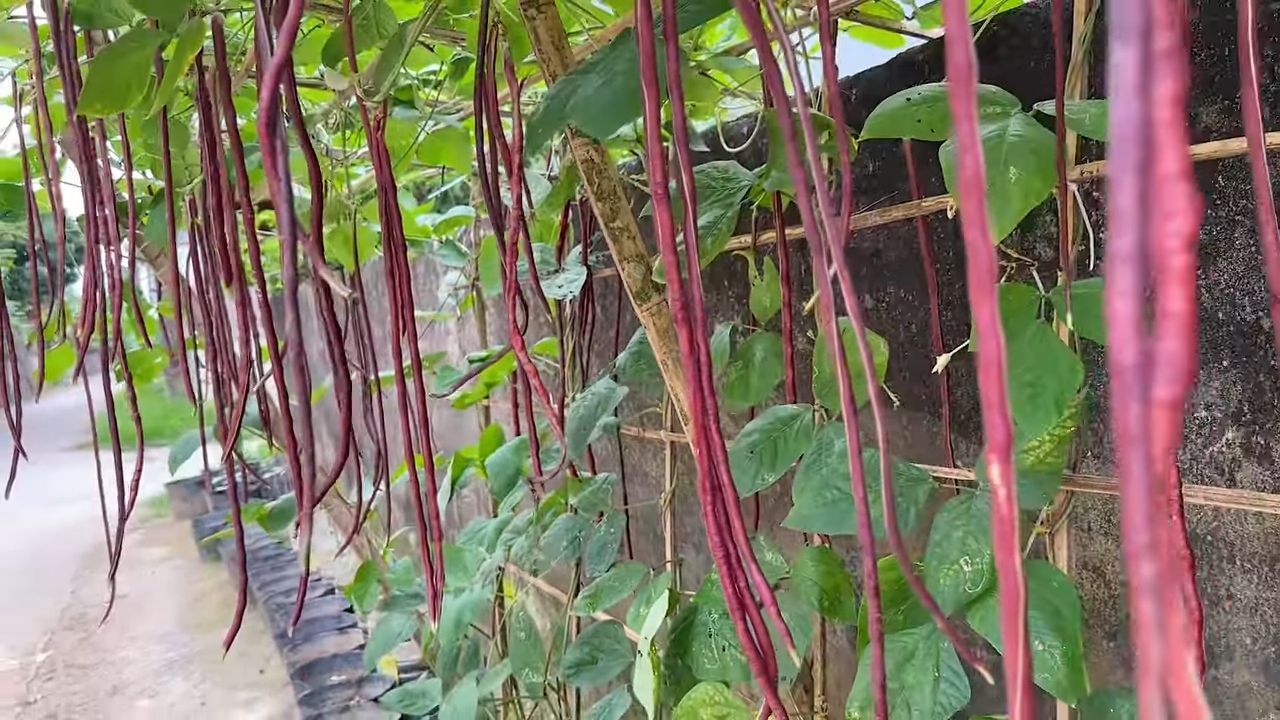
Yardlong-Bohnen-Ernte maximieren: Dein DIY-Leitfaden für eine üppige Ernte
Hallo Gartenfreunde! Ich bin total begeistert, euch heute meine bewährten DIY-Tricks und -Kniffe zu zeigen, mit denen ihr eure Yardlong-Bohnen-Ernte auf ein ganz neues Level heben könnt. Yardlong-Bohnen, auch bekannt als Spargelbohnen oder Schlangenbohnen, sind nicht nur super lecker, sondern auch ein echter Hingucker im Garten. Aber um wirklich eine reiche Ernte zu erzielen, braucht es ein bisschen mehr als nur Aussäen und Gießen. Lasst uns eintauchen!
Die Grundlagen: Was Yardlong-Bohnen lieben
Bevor wir uns in die Details stürzen, ist es wichtig zu verstehen, was Yardlong-Bohnen wirklich brauchen, um zu gedeihen. Hier sind die wichtigsten Punkte:
* Sonne, Sonne, Sonne: Yardlong-Bohnen sind Sonnenanbeter. Sie brauchen mindestens 6-8 Stunden direkte Sonneneinstrahlung pro Tag.
* Gut durchlässiger Boden: Staunässe ist ihr Feind. Sorgt für einen lockeren, gut durchlässigen Boden, der reich an organischen Stoffen ist.
* Wärme: Diese Bohnen lieben Wärme. Wartet mit der Aussaat, bis die Bodentemperatur konstant über 15°C liegt.
* Kletterhilfe: Yardlong-Bohnen sind Kletterpflanzen. Sie brauchen ein stabiles Rankgerüst, an dem sie hochwachsen können.
* Regelmäßige Bewässerung: Haltet den Boden feucht, aber nicht nass. Besonders während der Blütezeit und der Fruchtbildung ist ausreichend Wasser wichtig.
* Nährstoffe: Yardlong-Bohnen sind hungrig. Gebt ihnen regelmäßig einen ausgewogenen Dünger, um ihr Wachstum zu fördern.
DIY-Rankgerüst: Der Schlüssel zum Erfolg
Ein stabiles und gut durchdachtes Rankgerüst ist das A und O für eine erfolgreiche Yardlong-Bohnen-Ernte. Hier sind ein paar Ideen, die ihr leicht selbst bauen könnt:
* Tipi-Rankgerüst: Ein Klassiker, der einfach zu bauen ist und gut aussieht. Ihr braucht nur ein paar lange Bambusstäbe oder Äste und etwas Schnur.
* Zaun-Rankgerüst: Nutzt einen bestehenden Zaun oder baut einen einfachen Holzzaun, an dem die Bohnen hochklettern können.
* Gitter-Rankgerüst: Ein Gitter aus Holz oder Metall bietet eine stabile und gleichmäßige Kletterfläche.
* Bogen-Rankgerüst: Ein Bogen über einem Gartenweg ist nicht nur praktisch, sondern auch ein echter Hingucker.
Ich persönlich liebe das Tipi-Rankgerüst, weil es so einfach zu bauen ist und den Bohnen eine gute Unterstützung bietet. Hier ist, wie ich es mache:
Schritt-für-Schritt-Anleitung für ein Tipi-Rankgerüst
1. Materialien sammeln: Ihr braucht 5-7 Bambusstäbe oder Äste (ca. 2-3 Meter lang), etwas Schnur oder Draht und eine Schaufel.
2. Stäbe positionieren: Steckt die Stäbe in einem Kreis in den Boden, wobei die oberen Enden zusammengebunden werden. Der Durchmesser des Kreises sollte etwa 1 Meter betragen.
3. Stäbe verbinden: Bindet die oberen Enden der Stäbe mit Schnur oder Draht fest zusammen. Achtet darauf, dass das Tipi stabil steht.
4. Zusätzliche Unterstützung: Für zusätzliche Stabilität könnt ihr horizontale Schnüre zwischen den Stäben spannen.
5. Bohnen pflanzen: Pflanzt die Yardlong-Bohnen rund um die Basis des Tipis.
Bodenverbesserung: Der Grundstein für eine reiche Ernte
Ein guter Boden ist das A und O für gesunde Pflanzen. Yardlong-Bohnen bevorzugen einen lockeren, gut durchlässigen Boden, der reich an organischen Stoffen ist. Hier sind ein paar Tipps, wie ihr euren Boden verbessern könnt:
* Kompost: Kompost ist Gold wert! Mischt vor der Aussaat reichlich Kompost in den Boden.
* Pferdemist: Abgelagerter Pferdemist ist ein hervorragender Dünger und Bodenverbesserer.
* Gründüngung: Gründüngungspflanzen wie Phacelia oder Klee lockern den Boden auf und reichern ihn mit Nährstoffen an.
* Mulchen: Mulchen mit Stroh, Heu oder Rasenschnitt hält den Boden feucht, unterdrückt Unkraut und verbessert die Bodenstruktur.
Ich schwöre auf Kompost! Ich habe einen eigenen Komposthaufen im Garten und verwende den Kompost jedes Jahr, um meine Beete vorzubereiten. Es macht wirklich einen Unterschied!
Aussaat und Anzucht: Der richtige Start
Yardlong-Bohnen sind frostempfindlich. Wartet mit der Aussaat, bis die Bodentemperatur konstant über 15°C liegt. Ihr könnt die Bohnen entweder direkt ins Beet säen oder sie in Töpfen vorziehen.
* Direktsaat: Säet die Bohnen in einem Abstand von 10-15 cm und einer Tiefe von 2-3 cm.
* Vorziehen: Säet die Bohnen in Töpfen vor und pflanzt sie nach den letzten Frösten ins Beet.
Ich ziehe meine Yardlong-Bohnen immer vor, weil ich so einen Vorsprung habe und die Ernte früher beginnt. Hier ist, wie ich es mache:
Schritt-für-Schritt-Anleitung für die Anzucht
1. Töpfe vorbereiten: Füllt kleine Töpfe mit Anzuchterde.
2. Bohnen säen: Säet 2-3 Bohnen pro Topf in einer Tiefe von 2-3 cm.
3. Gießen: Gießt die Erde vorsichtig an.
4. Warm stellen: Stellt die Töpfe an einen warmen, hellen Ort.
5. Feucht halten: Haltet die Erde feucht, aber nicht nass.
6. Auspflanzen: Pflanzt die Jungpflanzen nach den letzten Frösten ins Beet.
Bewässerung und Düngung: Die richtige Pflege
Yardlong-Bohnen brauchen regelmäßige Bewässerung und Düngung, um optimal zu wachsen und eine reiche Ernte zu liefern.
* Bewässerung: Gießt die Bohnen regelmäßig, besonders während der Blütezeit und der Fruchtbildung. Vermeidet Staunässe.
* Düngung: Düngt die Bohnen alle 2-3 Wochen mit einem ausgewogenen Dünger. Ich verwende gerne organischen Flüssigdünger.
Ich habe festgestellt, dass eine Mulchschicht um die Pflanzen herum hilft, den Boden feucht zu halten und Unkraut zu unterdrücken.
Schutz vor Schädlingen und Krankheiten: Vorbeugen ist besser als Heilen
Yardlong-Bohnen sind relativ robust, aber sie können von einigen Schädlingen und Krankheiten befallen werden. Hier sind ein paar Tipps, wie ihr eure Pflanzen schützen könnt:
* Blattläuse: Blattläuse können mit einem Wasserstrahl abgespült oder mit Nützlingen wie Marienkäfern bekämpft werden.
* Bohnenfliege: Die Bohnenfliege kann durch eine frühe Aussaat und die Verwendung von Kulturschutznetzen vermieden werden.
* Pilzkrankheiten: Pilzkrankheiten können durch eine gute Belüftung und die Vermeidung von Staunässe vorgebeugt werden.
Ich kontrolliere meine Pflanzen regelmäßig auf Schädlinge und Krankheiten und greife bei Bedarf frühzeitig ein.
Ernte: Der Lohn der Arbeit
Die Erntezeit der Yardlong-Bohnen beginnt in der Regel etwa 60-70 Tage nach der Aussaat. Erntet die Bohnen, wenn sie noch jung und zart sind. Je öfter ihr erntet, desto mehr Bohnen werden produziert.
* Erntezeitpunkt: Erntet die Bohnen, wenn sie etwa 30-40 cm lang sind.
* Erntetechnik: Schneidet die Bohnen mit einer Schere oder einem Messer ab.
* Regelmäßige Ernte: Erntet die Bohnen regelmäßig, um die Produktion neuer Bohnen anzuregen.
Ich liebe es, meine eigenen Yardlong
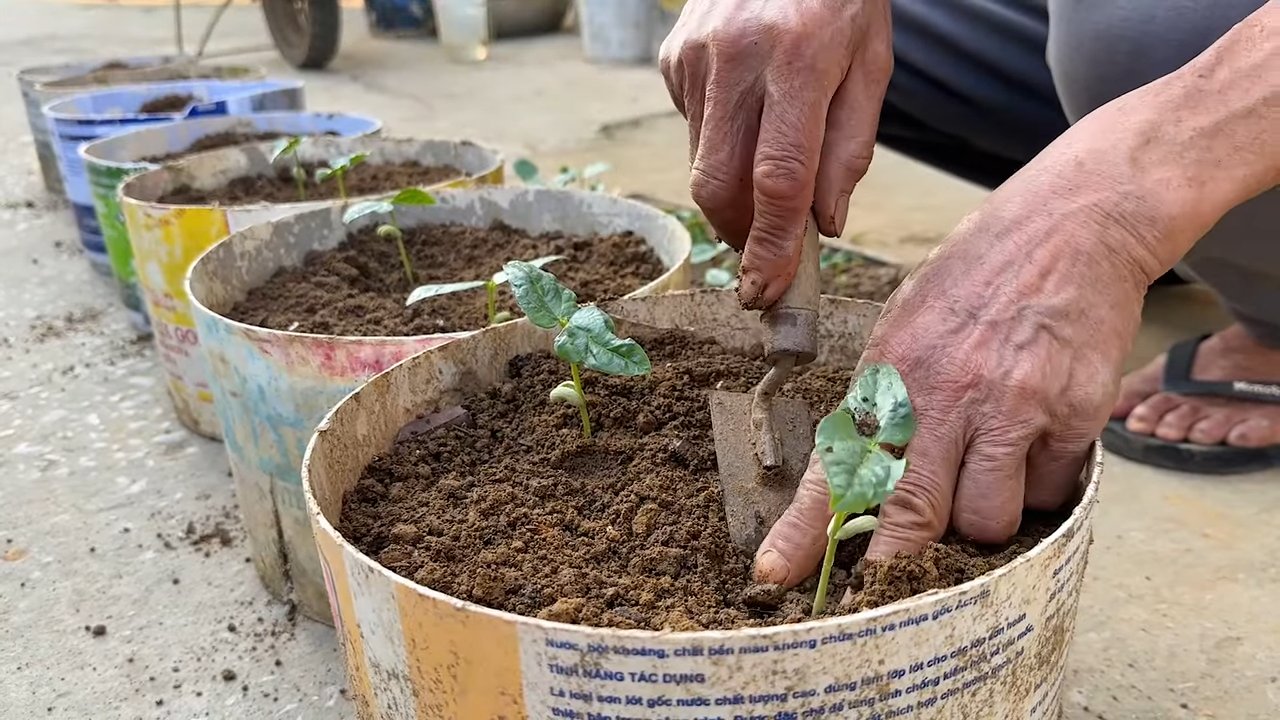
Conclusion
If you’re serious about maximizing your harvest and enjoying a truly bountiful supply of delicious, tender yardlong beans, then this DIY trick for achieving yardlong bean high yield is an absolute game-changer. We’ve explored the science behind it, the practical steps involved, and the potential benefits you can reap. It’s more than just a gardening tip; it’s a pathway to unlocking the full potential of your yardlong bean plants.
Think about it: imagine rows overflowing with these impressive, flavorful beans, ready to be transformed into stir-fries, salads, or simply enjoyed fresh from the vine. This isn’t just a dream; it’s an achievable reality with a little extra effort and the right knowledge.
But the beauty of this DIY approach lies not only in its effectiveness but also in its adaptability. Feel free to experiment with different variations to suit your specific growing conditions and preferences. For instance, if you live in a particularly hot climate, consider providing extra shade during the hottest part of the day to prevent sunscald. Or, if your soil is naturally poor, you might want to supplement with a slow-release fertilizer specifically formulated for beans.
Another exciting variation is to explore different trellising methods. While we’ve focused on a basic trellis system, you could try using a teepee structure, a woven fence, or even training your yardlong beans up an existing structure like a pergola. The possibilities are endless, and the key is to find what works best for your garden and your aesthetic preferences.
Don’t be afraid to get creative with your companion planting as well. Marigolds are known to deter nematodes, while basil can help repel bean beetles. Experiment with different combinations to create a thriving ecosystem that supports your yardlong bean plants and minimizes the need for chemical interventions.
Ultimately, the success of this DIY trick hinges on your willingness to try it out and adapt it to your unique circumstances. Gardening is a journey of learning and experimentation, and every season brings new opportunities to refine your techniques and achieve even better results.
We are confident that by implementing this DIY trick, you’ll witness a significant increase in your yardlong bean yield. But don’t just take our word for it. We encourage you to put it to the test in your own garden and see the results for yourself.
And most importantly, we want to hear about your experience! Share your successes, your challenges, and any variations you’ve tried in the comments below. Let’s create a community of yardlong bean enthusiasts who are passionate about maximizing their harvests and sharing their knowledge with others. Together, we can unlock the secrets to growing the most abundant and delicious yardlong beans imaginable. So, grab your gardening gloves, get your hands dirty, and prepare to be amazed by the power of this simple yet effective DIY trick. Happy gardening!
Frequently Asked Questions (FAQ)
What exactly is meant by “yardlong bean high yield”?
“Yardlong bean high yield” refers to the practice of employing specific techniques and strategies to maximize the quantity of yardlong beans produced by each plant or within a given growing area. It’s about optimizing growing conditions, providing adequate support, and implementing proactive measures to encourage prolific bean production. The goal is to harvest a significantly larger crop compared to what would be achieved with minimal or standard care.
How much of an increase in yield can I realistically expect?
The increase in yield can vary depending on several factors, including your local climate, soil quality, the specific variety of yardlong bean you’re growing, and the diligence with which you implement the DIY trick. However, with proper execution, you can realistically expect to see a 50% to 100% increase in your yardlong bean harvest compared to plants grown without these techniques. Some gardeners have even reported yields exceeding 100%, but this requires optimal conditions and consistent care.
What if I don’t have a lot of space for a trellis?
Even if you have limited space, you can still successfully grow yardlong beans using a smaller trellis or alternative support system. Consider using a sturdy tomato cage, a small A-frame trellis, or even a series of stakes connected with twine. The key is to provide some vertical support for the vines to climb, which will improve air circulation and sunlight exposure, ultimately leading to a higher yield. You can also explore container gardening options, using a large pot with a built-in trellis or adding a trellis structure to the container.
How often should I water my yardlong bean plants?
Yardlong beans require consistent moisture, especially during flowering and pod development. Water deeply and regularly, aiming to keep the soil consistently moist but not waterlogged. The frequency of watering will depend on your local climate and soil type. In general, water every 2-3 days during hot, dry weather, and less frequently during cooler or wetter periods. Check the soil moisture level regularly by inserting your finger about an inch into the soil. If it feels dry, it’s time to water.
What kind of fertilizer is best for yardlong beans?
Yardlong beans benefit from a balanced fertilizer with a slightly higher phosphorus content, which promotes strong root development and abundant flowering. A fertilizer with an NPK ratio of 5-10-5 or 10-20-10 is a good choice. Avoid fertilizers that are too high in nitrogen, as this can lead to excessive foliage growth at the expense of bean production. You can also amend your soil with compost or other organic matter to provide essential nutrients and improve soil drainage. Apply fertilizer according to the manufacturer’s instructions, typically every 4-6 weeks during the growing season.
Are there any common pests or diseases that affect yardlong beans, and how can I prevent them?
Yes, yardlong beans can be susceptible to certain pests and diseases, including aphids, bean beetles, spider mites, and fungal diseases like powdery mildew. To prevent these problems, practice good garden hygiene by removing weeds and debris around your plants. Encourage beneficial insects like ladybugs and lacewings, which prey on aphids and other pests. Use insecticidal soap or neem oil to control infestations if necessary. Ensure good air circulation around your plants to prevent fungal diseases. If powdery mildew appears, treat it with a fungicide specifically labeled for use on vegetables.
Can I grow yardlong beans in containers?
Absolutely! Yardlong beans can be successfully grown in containers, provided you choose a large enough pot (at least 12 inches in diameter) and provide adequate support for the vines to climb. Use a well-draining potting mix and water regularly. Container-grown yardlong beans may require more frequent fertilization than those grown in the ground, as nutrients can leach out more quickly. Place the container in a sunny location that receives at least 6-8 hours of direct sunlight per day.
How do I know when my yardlong beans are ready to harvest?
Yardlong beans are typically ready to harvest about 60-70 days after planting. The beans should be long and slender, but still tender and pliable. Avoid letting them become too thick or tough, as this will affect their flavor and texture. Harvest the beans regularly to encourage continued production. Use scissors or pruning shears to cut the beans from the vine, being careful not to damage the plant.
What are some good companion plants for yardlong beans?
Good companion plants for yardlong beans include marigolds (which deter nematodes), basil (which repels bean beetles), rosemary (which deters bean flies), and carrots (which can help break up the soil). Avoid planting yardlong beans near onions or garlic, as these can inhibit their growth.
What if my yardlong bean plants are flowering but not producing beans?
There are several reasons why your yardlong bean plants might be flowering but not producing beans. One possibility is that the flowers are not being pollinated properly. You can try hand-pollinating the flowers by using a small brush to transfer pollen from one flower to another. Another possibility is that the plants are stressed due to heat, drought, or nutrient deficiencies. Ensure that your plants are receiving adequate water and fertilizer, and provide shade during the hottest part of the day if necessary. Finally, some varieties of yardlong beans are more sensitive to temperature fluctuations than others. If you’re experiencing extreme temperature swings, this could be affecting bean production.

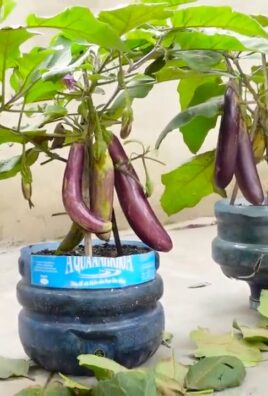
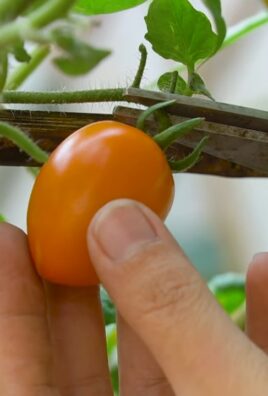
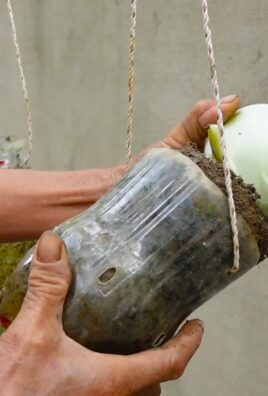
Leave a Comment